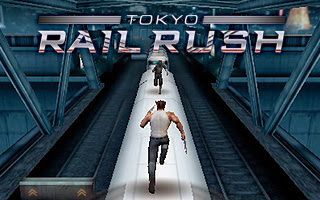

This solution has already been observed by Tokyo Governor Yuriko Koike, who launched the pilot programme of the municipal government’s Jisa Biz campaign in 2017. Instead, the onus would be on employers to introduce more flexi-work schemes that allow staggered hours for employees, thereby preventing everyone boarding the same train at 8am. Speaking to the Straits Times, Tokyo Foundation research fellow Shoko Yoshihara said that scheduling more trains wouldn’t offset delays at rush hour. “As for passenger interaction measures, we have dispatched security guards to the platforms to assist them, and implemented off-peak commuting campaigns.” “As for concrete infrastructural measures, we are renovating station facilities, such as installing new or expanding platforms,” says Yamaguchi. Morichi says that more lines should be introduced, more carriages should be added to train cars, and that the number of platforms should be increased at stations so they can accommodate more trains running in the same direction. Of the issues explored, rail experts appear to agree that congestion is still the biggest problem affecting punctuality during rush hour. Meanwhile, Shin-Koiwa station has installed signs with suicide hotline numbers. LEDs emitting a calming blue light have been installed at stations along the Yamanote line, which has reportedly reduced suicide incidents since the 2009 peak. Visual systems have also been introduced at Tokyo stations to help deter train jumpers. As of 31 March 2017, installation has been completed on 55%. “Completion of installation on the entire network is planned for 2025. “In recent years, we have been committed to installation of platform doors,” says Yamaguchi. Platform screen doors – barriers that stretch along the edge of platforms and open and close for passengers – are being installed at more stations in the capital. Japanese rail operators began initiatives to curb incidences of train suicides in the late 1990s, which tie in with moves to enhance safety. Unfortunately, stories of passengers jumping in front of trains still hit the headlines. This the lowest figure for Japan in more than 20 years, but still one of the highest for a developed nation worldwide. “Japanese rail operators began initiatives to curb incidences of train suicides in the late 1990s.”Īccording to Japan’s National Police Agency, the number of suicides in the country last year was 21,140. Nevertheless, suicides account for 43.6% of long-term delays, highlighting a disturbing trend still prevalent on the railways. Then the alternative line is delayed because of overcrowding.” Preventing suicidesĪccording to the MLIT report, major rail interruptions of 30 minutes or longer were significantly less common, occurring less than one work day a month across 35 lines. “When a line is delayed, the passengers transfer to the alternative line. “There are alternative routes for each trip, from origin to destination, because of the high density of the network,” he says. He also says that there are too many trains on the track, and a fault in the vehicle at the front can be a catalyst for speed reduction along the rest of the line. Shigeru Morichi, a professor at the National Graduate Institute for Policy Studies, explains that the flexibility of travel options offered by the network is a double-edged sword, as a delay can cause a ripple effect.

“Since the delay of those lines is carried over into our lines, the delay rate varies.” “Seven of our total of nine lines operate reciprocal through-service (inter-running operation), each with different partner line railway operators,” he says. This interconnectivity, which Yamaguchi refers to as ‘reciprocal through-service operation’, can lead to delays being passed on to the metro from partnering lines. Separately owned regional lines mesh together with inner city subways, meaning that suburban-bound commuter trains continue directly onto subway routes. Tokyo’s ludicrously complex metro map gives a fairly good impression of the network’s density. “We believe that not only is overcrowding a cause of delay, but it can also be a danger to passenger movement,” says Tokyo Metro spokesperson Takahiro Yamaguchi. Tokyo Metro, which runs nine subway lines, reported delays on between seven and 18 working days a month on average. Tokyo’s subways often bear the brunt of the commuter onslaught.


 0 kommentar(er)
0 kommentar(er)
